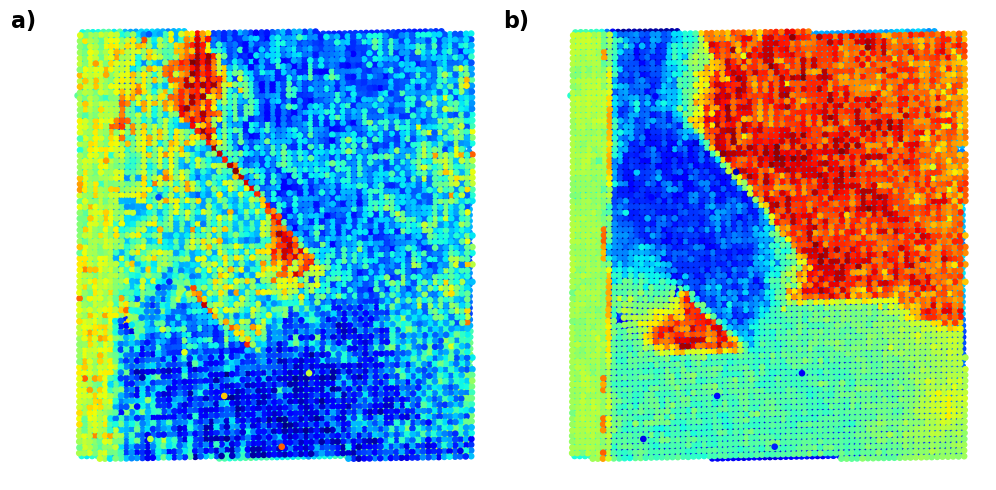Conditional VAE
However, the previous analysis presented a significant limitation: it assumed a shared latent representation for both A-site and B-site cations, despite their inherently distinct physical and chemical roles. To address this issue, we now employ a conditional Variational Autoencoder (cVAE), where the cation type is incorporated as a known variable. By conditioning the latent space on this additional information, we aim to achieve a more accurate and physically meaningful representation of the system.
Condition 1: Set the conditiona as A and B site atoms of the material
The two latent spaces shown are for A-type cations and B-type cations, modeled separately using the Conditional Variational Autoencoder (C-VAE). This approach allows us to study each cation type individually and see how they behave in the latent space.
Manifold for A-type cations:
- This pattern suggests that the variations in the A-type cations are smooth and follow an organized structure, similar to their positions in the crystal lattice.
Manifold for B-type cations:
- This pattern looks slightly different from the A-type manifold. The differences might come from physical changes in the B-type cations, like polarization shifts or small distortions in their positions.
We observe intriguing new behavior, particularly anomalous variations in at the “diffuse” domain walls. This raises questions about the underlying mechanisms. To further investigate, we propose introducing invariances into the analysis to gain deeper insights.



